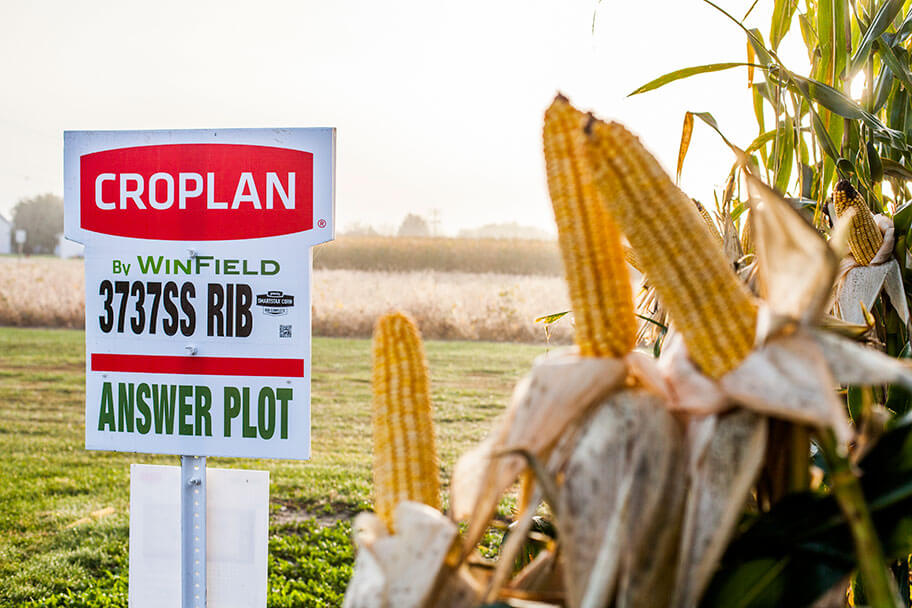Make Sure Your Data Yields Value

As farmers begin planning for next year, now is the time to set expectations to determine success in 2016. Aaron Ault’s blog posts about the value of data include important factors to consider during this preplanting stage.
As project lead of Open Ag Data Alliance (OADA) and senior research engineer for the Open Ag Technology Group at Purdue University, Ault brings up two critical reminders. First, using ag data to improve daily operational logistics is “the single most likely way to start making data profitable on your farm.” And, second, as far as practices are concerned, data is “the only way of truly figuring out what works best.”
Ault makes some valid points. Here is my take on how to make data more valuable.
1. Set up field trials before planting.
Creating a plan now gives you and your agronomist the opportunity to (1) evaluate what worked last season, and (2) determine what you want to try next season — with ample opportunity for an exchange of ideas. Don’t just do one side-by-side trial. Strip your field into sections and do multiple trials in several environments: on different soils, where various types of applications have been made, etc., to get a range of data.
2. Make a plan and stick to it.
One of the biggest mistakes I see in terms of data collection is not following up on trials after harvest. If you don’t follow up, you don’t know what created yield differences between fields. The best thing your agronomist can do is set expectations early about what success will look like for you, then check in at regular intervals throughout the season. Make sure to involve all the key players in this process, such as farm managers and applicators, so they can help implement the plan. At the end of the season, work with your team to collect and analyze results. Leave nothing to chance — the quality of the data you collect depends on it.
3. Reduce variability as much as possible.
Use tools like the R7® Profitability Map to connect input costs and yield potential map data to determine ROI. Less-profitable areas provide an opportunity to align input investments with yield potential the following year. Evaluate everything: good, bad and ugly. It’s the only way you will get an accurate picture of what happened this year, why it happened, and what you need to keep or change next year.
4. Be sure your data is credible.
You need to trust the source of your data. Product trials conducted through the Answer Plot® program provide sound data, not only for WinField® and CROPLAN® products, but for other companies’ products as well. In fact, products sold by other companies may be at the top of our recommendations for your fields.
Talk with your WinField agronomist to ensure that your data is providing you with the highest value — and the highest yield and ROI potential.
As project lead of Open Ag Data Alliance (OADA) and senior research engineer for the Open Ag Technology Group at Purdue University, Ault brings up two critical reminders. First, using ag data to improve daily operational logistics is “the single most likely way to start making data profitable on your farm.” And, second, as far as practices are concerned, data is “the only way of truly figuring out what works best.”
Ault makes some valid points. Here is my take on how to make data more valuable.
1. Set up field trials before planting.
Creating a plan now gives you and your agronomist the opportunity to (1) evaluate what worked last season, and (2) determine what you want to try next season — with ample opportunity for an exchange of ideas. Don’t just do one side-by-side trial. Strip your field into sections and do multiple trials in several environments: on different soils, where various types of applications have been made, etc., to get a range of data.
2. Make a plan and stick to it.
One of the biggest mistakes I see in terms of data collection is not following up on trials after harvest. If you don’t follow up, you don’t know what created yield differences between fields. The best thing your agronomist can do is set expectations early about what success will look like for you, then check in at regular intervals throughout the season. Make sure to involve all the key players in this process, such as farm managers and applicators, so they can help implement the plan. At the end of the season, work with your team to collect and analyze results. Leave nothing to chance — the quality of the data you collect depends on it.
3. Reduce variability as much as possible.
Use tools like the R7® Profitability Map to connect input costs and yield potential map data to determine ROI. Less-profitable areas provide an opportunity to align input investments with yield potential the following year. Evaluate everything: good, bad and ugly. It’s the only way you will get an accurate picture of what happened this year, why it happened, and what you need to keep or change next year.
4. Be sure your data is credible.
You need to trust the source of your data. Product trials conducted through the Answer Plot® program provide sound data, not only for WinField® and CROPLAN® products, but for other companies’ products as well. In fact, products sold by other companies may be at the top of our recommendations for your fields.
Talk with your WinField agronomist to ensure that your data is providing you with the highest value — and the highest yield and ROI potential.

